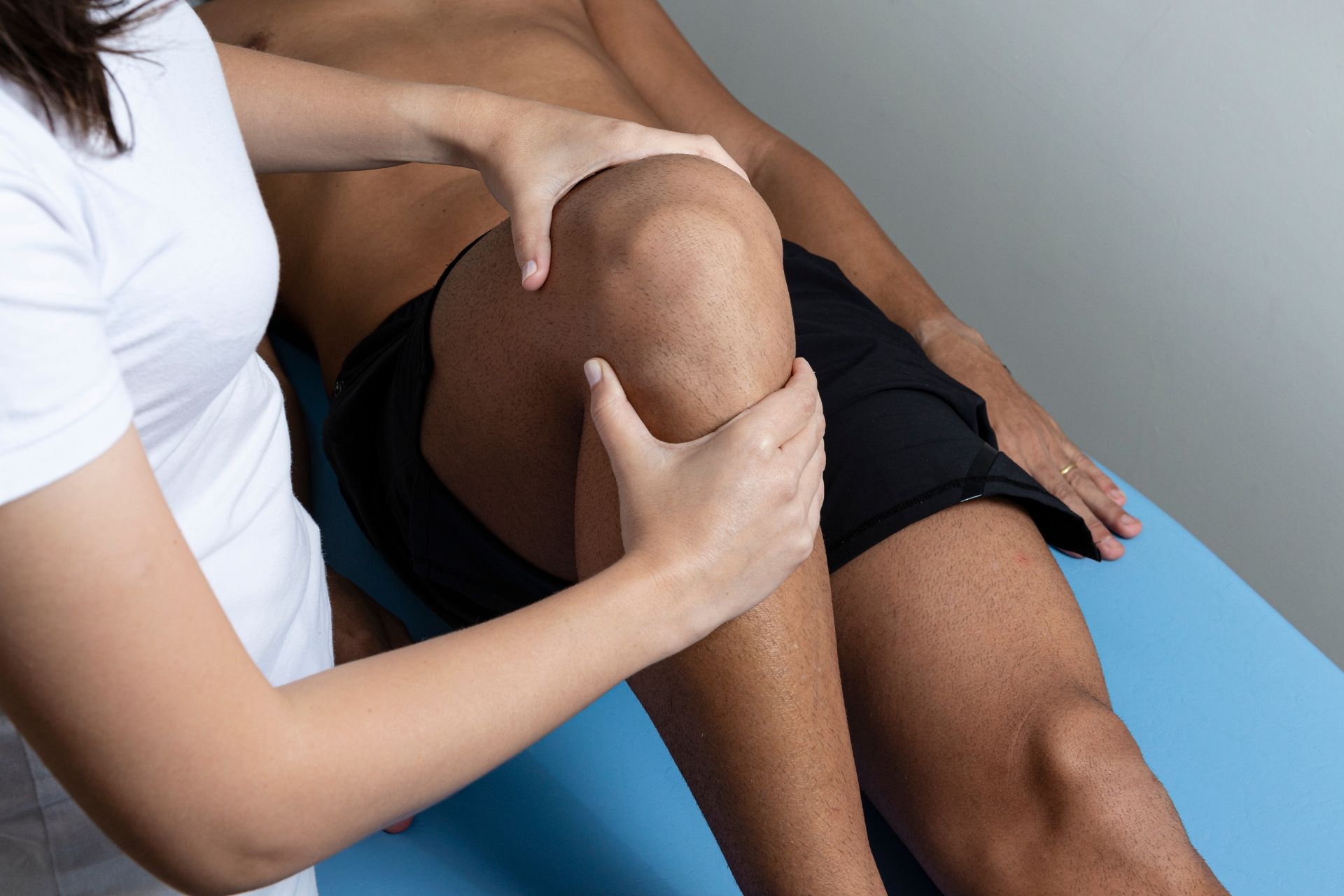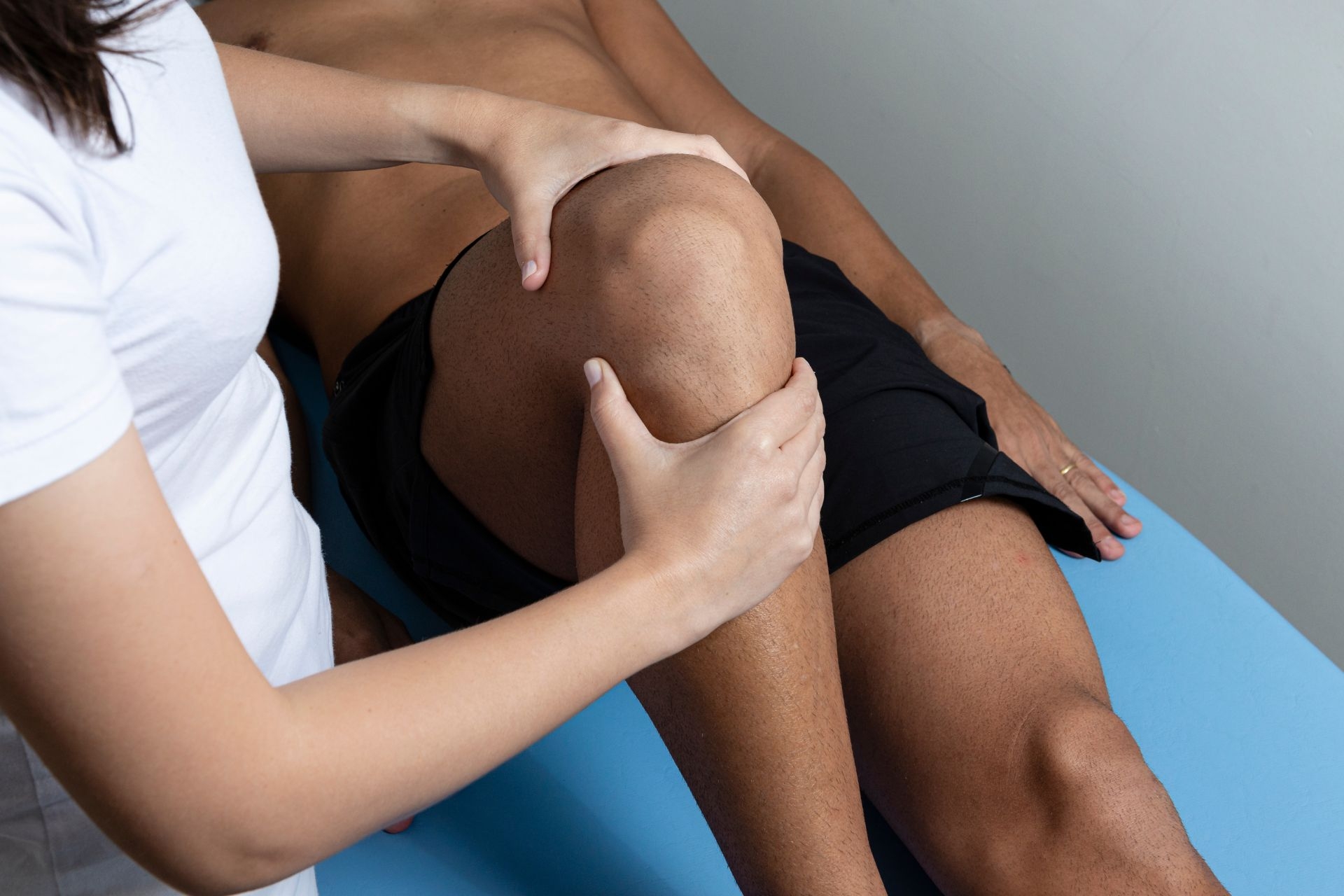

The normal thickness of the Achilles tendon in adults typically ranges from 6 to 8 millimeters. This measurement is taken at the thickest part of the tendon, which is usually located about 2 to 6 centimeters above the insertion point at the calcaneus bone. It is important to note that the thickness of the Achilles tendon can vary slightly among individuals, but this range is generally considered to be within the normal limits.
When comparing the thickness of the Achilles tendon between males and females, research has shown that there is a slight difference. On average, the Achilles tendon tends to be slightly thicker in males compared to females. This difference may be attributed to various factors, including hormonal influences, genetic predisposition, and differences in physical activity levels. However, it is important to note that the variation in thickness between males and females is relatively small and may not have significant clinical implications.
By Professional Physical Therapy A healthy heart is the cornerstone of overall well-being, and taking proactive steps to maintain cardiovascular health is crucial for a long and vibrant life. This is a particularly important message because heart disease is the leading cause of death in our country. The good news is that many causes of … Continued The post 7 Essential Tips to Keep Your Heart Healthy appeared first on Professional Physical Therapy.
Posted by on 2024-01-15
By Professional Physical Therapy Professional Physical Therapy, a leading provider of outpatient physical therapy and rehabilitation services throughout New York, New Jersey, Connecticut, Massachusetts, and New Hampshire, announces the opening of a new state-of-the-art clinic in the heart of Dyker Heights, NY on January 2, 2024. This marks their third clinic opening in Brooklyn and … Continued The post Professional Physical Therapy Announces New Clinic Opening in Dyker Heights, NY appeared first on Professional Physical Therapy.
Posted by on 2024-01-15
By Professional Physical Therapy Professional Physical Therapy, a leading provider of outpatient physical therapy and rehabilitation services throughout New York, New Jersey, Connecticut, Massachusetts, and New Hampshire, announces the opening of a new state-of-the-art clinic in Livingston, NJ on January 2, 2024. Even more patients in New Jersey will have greater access to the clinical … Continued The post Professional Physical Therapy Opens New Clinic in Livingston, NJ appeared first on Professional Physical Therapy.
Posted by on 2024-01-15
Yes, the thickness of the Achilles tendon can be affected by age. As individuals age, there is a natural degeneration and thinning of the tendon. This is believed to be due to a decrease in collagen production and an increase in collagen breakdown. Studies have shown that the Achilles tendon tends to become thinner and weaker with advancing age. This age-related thinning of the tendon can potentially increase the risk of tendon injuries and may contribute to conditions such as Achilles tendinopathy.

There are several potential causes of an abnormally thick Achilles tendon. One common cause is chronic inflammation or injury to the tendon, which can lead to thickening as a result of scar tissue formation. Other factors that can contribute to an abnormally thick Achilles tendon include genetic predisposition, certain medical conditions such as rheumatoid arthritis or gout, and excessive mechanical stress on the tendon due to activities such as running or jumping. It is important to note that an abnormally thick Achilles tendon may be a sign of an underlying pathology and should be evaluated by a healthcare professional.
Research has shown that there is a correlation between the thickness of the Achilles tendon and the risk of tendon injuries. A thicker Achilles tendon has been associated with an increased risk of conditions such as Achilles tendinopathy, Achilles tendon tears, and tendon ruptures. This is believed to be due to the fact that a thicker tendon may have reduced flexibility and elasticity, making it more prone to injury. However, it is important to note that other factors such as tendon quality, biomechanics, and individual variations can also influence the risk of tendon injuries.

Certain medical conditions or diseases can lead to an increase in Achilles tendon thickness. For example, conditions such as Achilles tendinopathy, rheumatoid arthritis, gout, and systemic lupus erythematosus have been associated with thickening of the Achilles tendon. These conditions can cause chronic inflammation and degeneration of the tendon, leading to thickening as a result of scar tissue formation. It is important for individuals with these conditions to receive appropriate medical management and monitoring to prevent further complications.
In clinical practice, the thickness of the Achilles tendon is typically measured using ultrasound imaging. This non-invasive imaging technique allows for accurate measurement of the tendon thickness and can provide valuable information about its structure and integrity. During the ultrasound examination, the tendon is visualized in both longitudinal and transverse planes, and the thickness is measured at the thickest part of the tendon. This measurement is then compared to the normal range for adults to determine if there is any abnormal thickening or thinning of the Achilles tendon. Ultrasound imaging is a valuable tool in the diagnosis and monitoring of various tendon conditions and injuries.

MSKUS, or musculoskeletal ultrasound, can be an effective diagnostic tool for myofascial pain syndrome. This imaging technique utilizes high-frequency sound waves to produce detailed images of the muscles, tendons, and surrounding soft tissues. By visualizing the affected area, MSKUS can help identify any abnormalities or changes in the muscle and fascia that may be contributing to the pain. Additionally, MSKUS can provide real-time imaging, allowing for dynamic assessment of muscle function and movement patterns. This can be particularly useful in diagnosing myofascial trigger points, which are often palpable but may not be easily visible on other imaging modalities. Overall, MSKUS can play a valuable role in the diagnosis and management of myofascial pain syndrome by providing clinicians with a non-invasive and real-time assessment of the affected musculoskeletal structures.
MSKUS, or musculoskeletal ultrasound, can be beneficial for evaluating sacroiliac joint dysfunction. This imaging technique uses high-frequency sound waves to create detailed images of the musculoskeletal system, including the sacroiliac joint. By visualizing the joint and surrounding structures, MSKUS can help identify any abnormalities or inflammation that may be contributing to the dysfunction. Additionally, MSKUS can provide real-time imaging, allowing for dynamic assessment of the joint during movement or stress tests. This can aid in the accurate diagnosis and monitoring of sacroiliac joint dysfunction. Furthermore, MSKUS is non-invasive and does not involve exposure to ionizing radiation, making it a safe and preferred imaging modality for evaluating this condition. Overall, MSKUS can play a valuable role in the assessment and management of sacroiliac joint dysfunction.
MSKUS, or musculoskeletal ultrasound, can be a useful tool for assessing spinal conditions such as herniated discs. This non-invasive imaging technique utilizes high-frequency sound waves to produce real-time images of the musculoskeletal system. By using MSKUS, healthcare professionals can visualize the spinal structures, including the intervertebral discs, and identify any abnormalities or pathologies, such as herniation. The use of MSKUS in assessing spinal conditions offers advantages such as its ability to provide dynamic imaging, allowing for the evaluation of the spine in different positions and during movement. Additionally, MSKUS can help in determining the size, location, and extent of the herniated disc, aiding in treatment planning and monitoring the progress of the condition. Overall, MSKUS can be a valuable tool in the diagnostic process of spinal conditions, including herniated discs, providing detailed and real-time information for healthcare professionals.
MSKUS, or musculoskeletal ultrasound, is a diagnostic imaging technique that can be used to detect early signs of osteoarthritis in joints. By utilizing high-frequency sound waves, MSKUS can provide detailed images of the joint structures, including the cartilage, synovial fluid, and surrounding tissues. This allows healthcare professionals to assess the integrity of the joint and identify any abnormalities or changes that may indicate the presence of osteoarthritis. Additionally, MSKUS can help evaluate the thickness and quality of the cartilage, detect joint effusion or inflammation, and assess the presence of osteophytes or bone spurs, which are common features of osteoarthritis. Overall, MSKUS is a valuable tool in the early detection and monitoring of osteoarthritis, enabling timely intervention and management strategies to be implemented.
When it comes to using MSKUS (Musculoskeletal Ultrasound) for superficial versus deep tissue evaluations, there are several key differences. Superficial tissue evaluations typically involve assessing structures that are closer to the surface of the body, such as tendons, ligaments, and superficial muscles. In these cases, MSKUS can provide high-resolution images that allow for detailed visualization of these structures and can help in diagnosing conditions like tendonitis or ligament tears. On the other hand, deep tissue evaluations involve assessing structures that are located deeper within the body, such as deep muscles, joints, or organs. In these cases, MSKUS may face challenges due to the limited penetration of ultrasound waves through deeper tissues. However, advancements in technology have improved the ability of MSKUS to visualize deep tissues, allowing for the evaluation of conditions like deep muscle tears or joint abnormalities. Overall, while MSKUS is a valuable tool for both superficial and deep tissue evaluations, the depth of the tissue being assessed can impact the level of detail and accuracy that can be achieved.
Assessing obese patients using MSKUS (musculoskeletal ultrasound) presents several challenges. Firstly, the increased thickness of subcutaneous adipose tissue in obese individuals can hinder the penetration of ultrasound waves, making it difficult to obtain clear and accurate images of the musculoskeletal structures. Additionally, the excessive body fat can obscure the visualization of anatomical landmarks, making it challenging to identify and assess specific structures. The increased body mass index (BMI) in obese patients can also limit the range of motion during the ultrasound examination, further complicating the assessment process. Moreover, the presence of comorbidities commonly associated with obesity, such as diabetes or cardiovascular disease, may affect the interpretation of MSKUS findings and require additional considerations. Overall, these challenges highlight the need for specialized techniques and expertise when using MSKUS to assess obese patients.